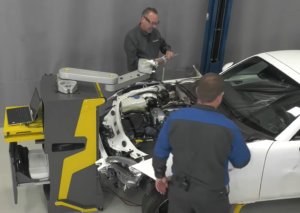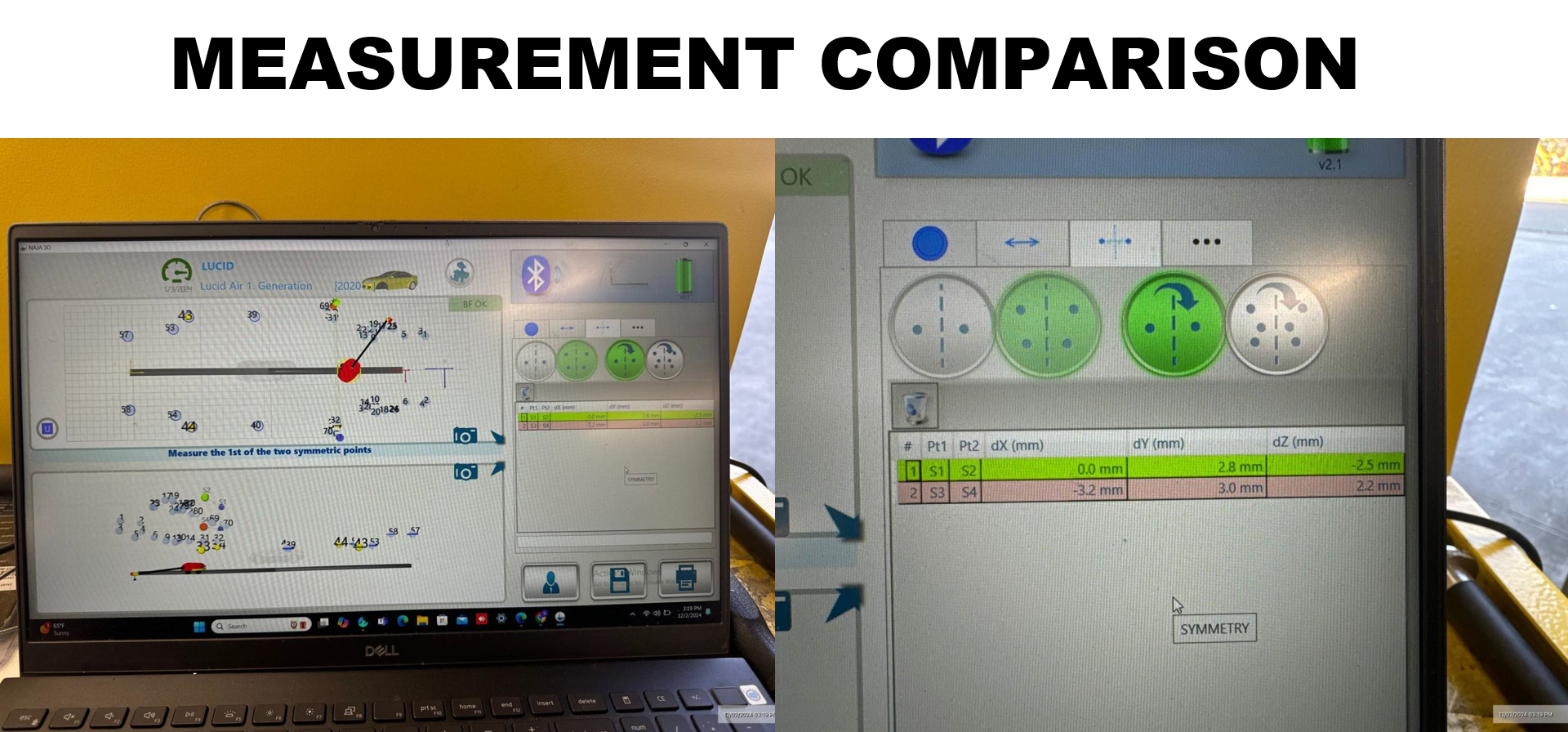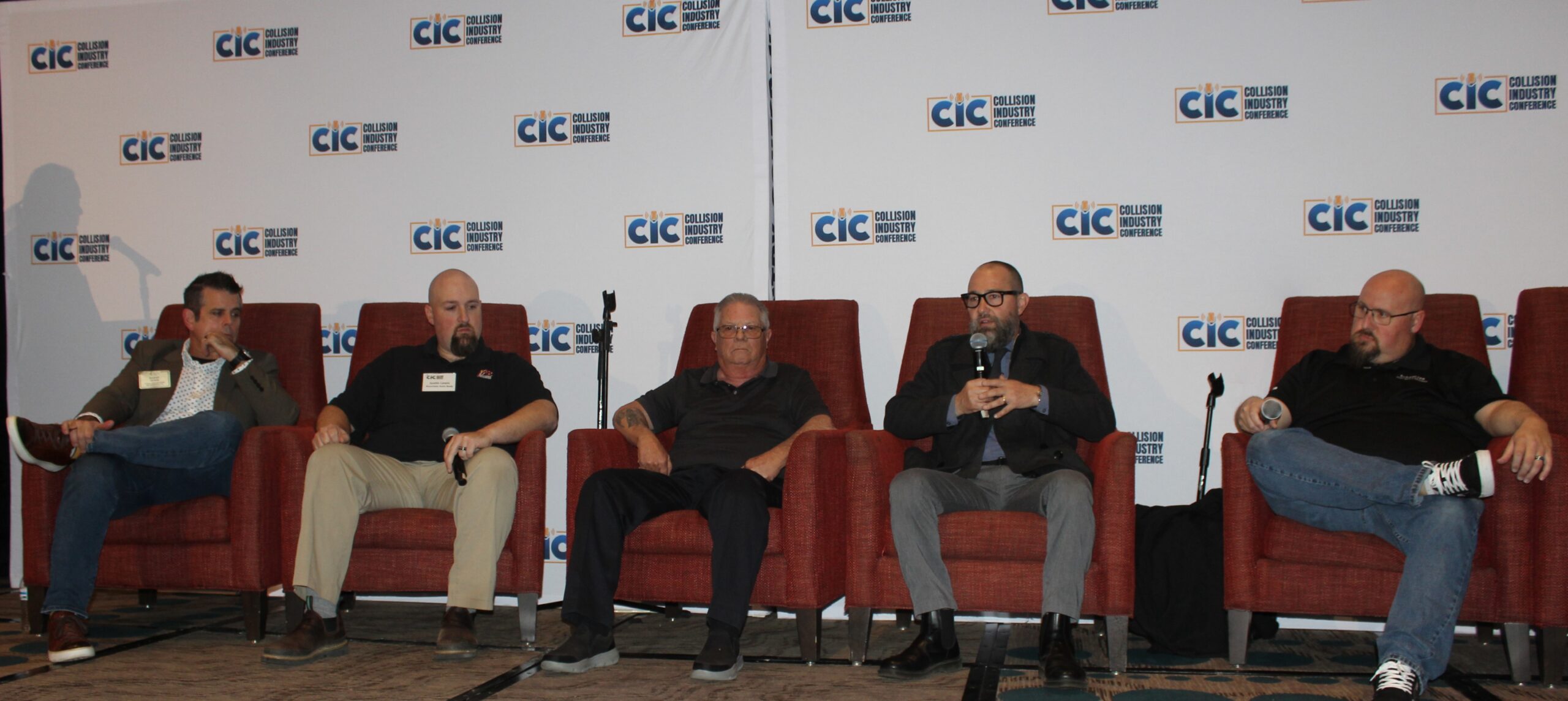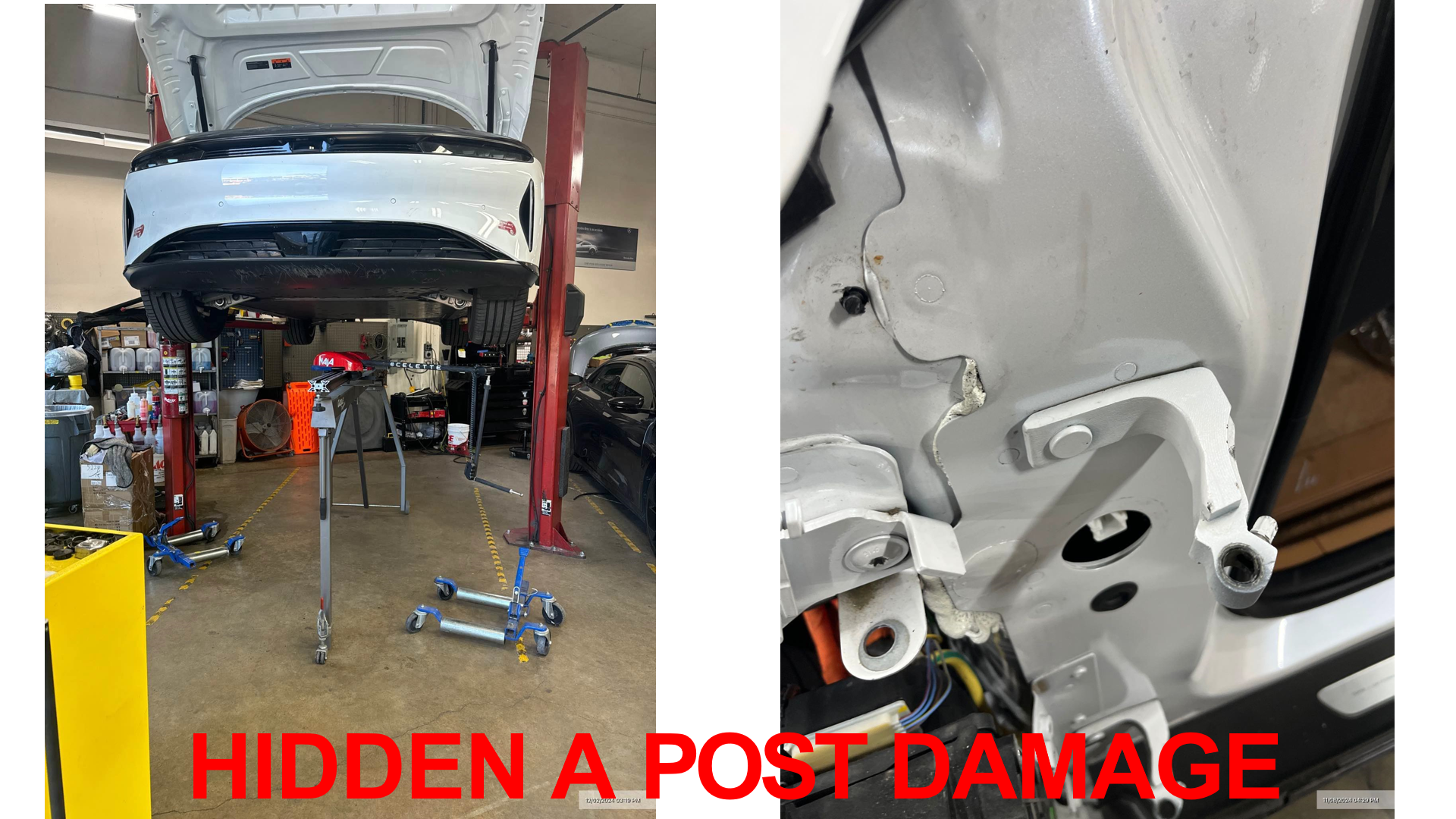
CIC committee says structural pre- and post-measuring as critical as pre- and post-scanning
By onCollision Repair | Repair Operations
A panel discussion during the January Collision Industry Conference (CIC) meeting emphasized the importance of structural pre- and post-measuring to ensure safe and proper repairs.
Ken Boylan, retired research and specifications manager for Chief Automotive Technologies; Justin Lewis, president of Accurate Auto Body in Washington; Matt Pitta, Lucid Motors technical manager, and Daniel Ianetta, California Bureau of Automotive Repair (BAR) program manager discussed delivering on the necessary steps as part of a presentation by CIC’s Repair Process and Procedures Committee.
Committee co-chairs Kye Yeung, European Motor Car Works president, and Barry Dorn, Dorn’s Body & Paint vice president, and the panelists agreed that technicians must learn today’s appropriate measuring procedures, such as 3D measuring, with proper equipment to accurately document and determine collision damages.
“There’s a challenge in our industry to get technicians up to speed because a lot of equipment that’s exposed to us today are done in metric,” Yeung said. “There may be errors involved because they don’t understand that system… The enhanced tools that we have today, there’s a huge amount of time savings and documentation.”
For example, an often-used tool “back in the day,” he said, was centering gauges which are appropriate for quick damage analyses but are only one-dimensional and don’t check upper body measurements. Some new technicians are still being taught to use centering gauges, Yeung added.
“One of the struggle points that we have is the pushback of compensation,” Yeung said. “What I find amazing is all of a sudden the industry accepts pre-scanning a vehicle but they don’t really embrace pre-measuring a vehicle. …I’m encouraging everybody here to understand the fact that before you even start a repair on a vehicle, it needs to be measured so that you can comprehend what the damage is.”
Pitta encouraged the same sentiment.
“Diagnostics and pre-scans cover your electrical system, modules, and all your ADAS sensors,” he said. “This [pre-measuring] is now the physical structure version of that. Diagnostic pre-scans are pretty much required now; that car comes in, you’re pre-scanning the car. This is the next step. This is the thing you can’t do with the scan tool. …you’re going to have to start doing it… It’s called out our procedures.”
Lucid plans to release a position statement on measuring this month. Measuring with a digital measuring system will be mandatory beginning in May, Pitta said.
“We measure it for that empty chair down there to make sure those people are safe,” Pitta said. “Even if it is 2 millimeters off, it’s still within intolerance. …We have to address it and we have to figure out if we can repair it or if we have to remove the component and replace it. The reason why we do this on the OEM side is when something does show up like this, I can take all of this data to our engineering teams and our craft safety teams and say, ‘We’re out of tolerance.'”
Pitta shared an example of why pre- and post-measuring should always be completed. He noted the example as being drastic but said it illustrates damages that wouldn’t be identified in a basic damages overview. The vehicle pictured below was involved in a collision that made impact with the A-pillar.
“With digital measuring, we’re able to measure millimeters or even extreme fractions of a millimeter how far off the structure rates,” Pitta said.
“Is there a way that we can perform a localized repair and stay within the guidelines of crash safety? We were able to do that,” Pitta said. “We only had to move 1.2 millimeters. We used the process that we outlined for this specific vehicle [and] were able to return it back to within spec without having to cut the car apart, not compromising the structure, and got the car back on the road. We can only do that when we use a digital measuring system.”
Boylan added that correct measurements also depend on the country vehicles were manufactured.
“Was it Japan, was it China, was it us? Was it Canada, Mexico? Each of those bodies measured differently so you have to identify where the car was built,” he said. “You can’t repair a vehicle to measure it,” Boylan said. “You don’t know what’s wrong with the vehicle until you measure it. We don’t even understand what those measurements are until we measure the vehicle correctly.”
Lewis said every repairer is responsible for providing their customers with safely repaired vehicles, and every OEM should have a position statement that states that.
“With the way that energy load paths are now built into vehicles and the engineering and all the R&D that gets done, you might be disguising structural damage that you may not be aware if you’re just going off of a technician’s eyeball,” he said. “You might be sending a car down the road that has structural damage that you, your technician, your customer doesn’t know it’s there.
“The other facet of that is when you do a repair, you own that repair until that car hit the junkyard… If you do a subpar repair because you didn’t measure it to guarantee that that structure was not compromised, it’s still your liability.”
In California, there are some laws specific to structural repair, including repair facility equipment, according to Ianetta.
California Code of Regulation 3351.5B requires repair facilities that complete structural repairs to have a three-dimensional system and a frame machine capable of doing either body poles or conventional frame poles, he said.
“When we’re talking about frames and we’re talking about the structural integrity of that vehicle being compromised because of the improper repair, those are things that we [BAR] oversee and look into,” Ianetta said. “Nowadays, vehicles are so equipped with safety features and vehicle assist sensors and features… that people are getting accustomed to and they’re either directly on the body of the vehicle or they’re on frames.
“Even an air bag sensor being a degree off up, down, left, right could mean a deployment of a second too soon or a second too late and could be catastrophic for the occupants of that vehicle.”
Yeung suggested that the definitions of “pre-measuring” and “post-measuring” be expanded for the industry to include a 3D measuring format. That way, “everybody understands that the care was taken to understand the length, width, and height of that particular vehicle at that kind of space” because, as it’s understood now, is vague.
Dorn told the audience that repairers and shops that fail to pre- and post-measure every vehicle with today’s methods and repair procedures could easily become a liability cautionary tale.
“If you go back into your shops and talk to a technician, he or she learned from somebody 20 years ago or more, and that person that trained them learned from somebody 20 to 30 years before that so now we’re taking 1950s and 1960s technologies and thought processes and we’re trying to make them work on today’s vehicles,” Dorn said. “That’s impossible. That’s what a lot of repairers struggle with.
“There’s a significant amount of managers and owners that have never actually turned a wrench. There’s nothing wrong with that but somebody has got to be in there that knows what is going on with that vehicle and can say, ‘This needs to be looked at further’ because we base this on mindsets from 20, 30 years ago. That’s historical. If you’re going back more than five years, you’re going back too far.”
The slideshow from the committee’s presentation shows examples of measuring tools used today by repair facilities and can be viewed here.
Images
Featured image: Spanesi Touch – Three-Dimensional Measuring System Setup and Operation YouTube screenshot
(From left) Barry Dorn, Justin Lewis, Ken Boylan, Daniel Ianetta, and Matt Pitta. (Lurah Lowery/Repairer Driven News)
Lucid vehicle images provided by CIC/Lucid


